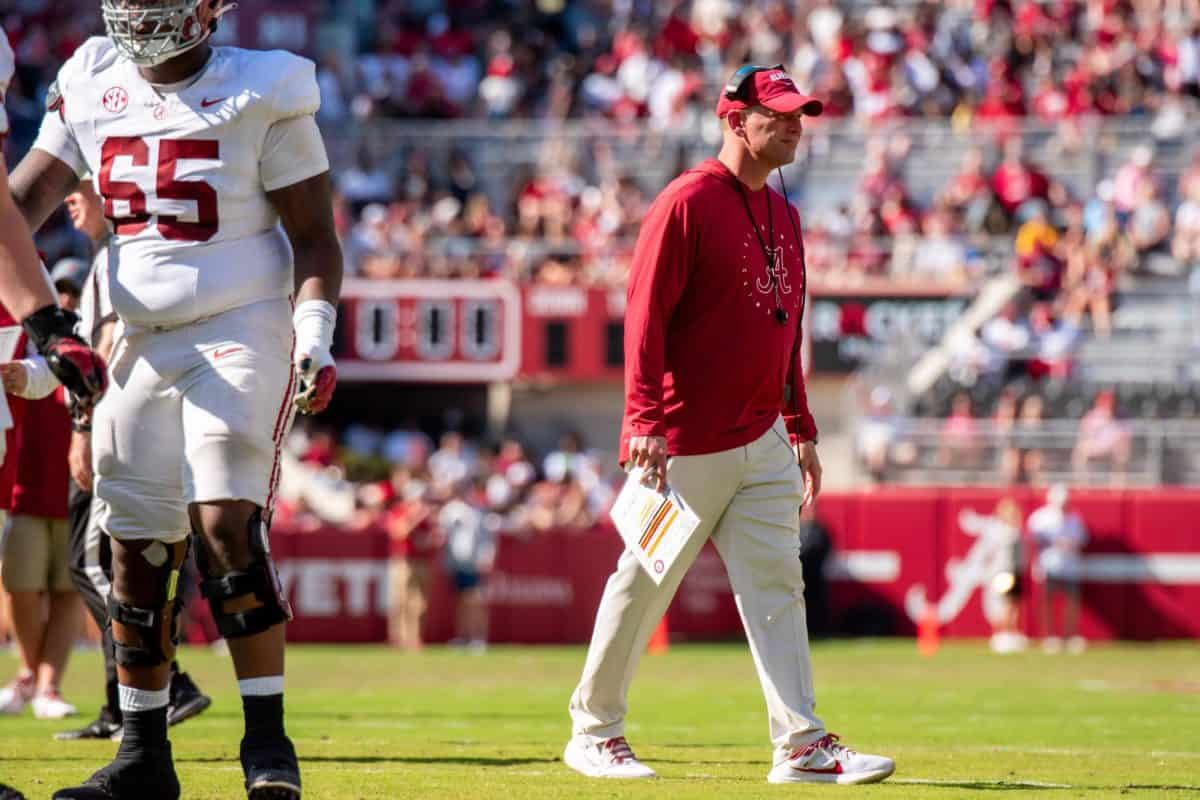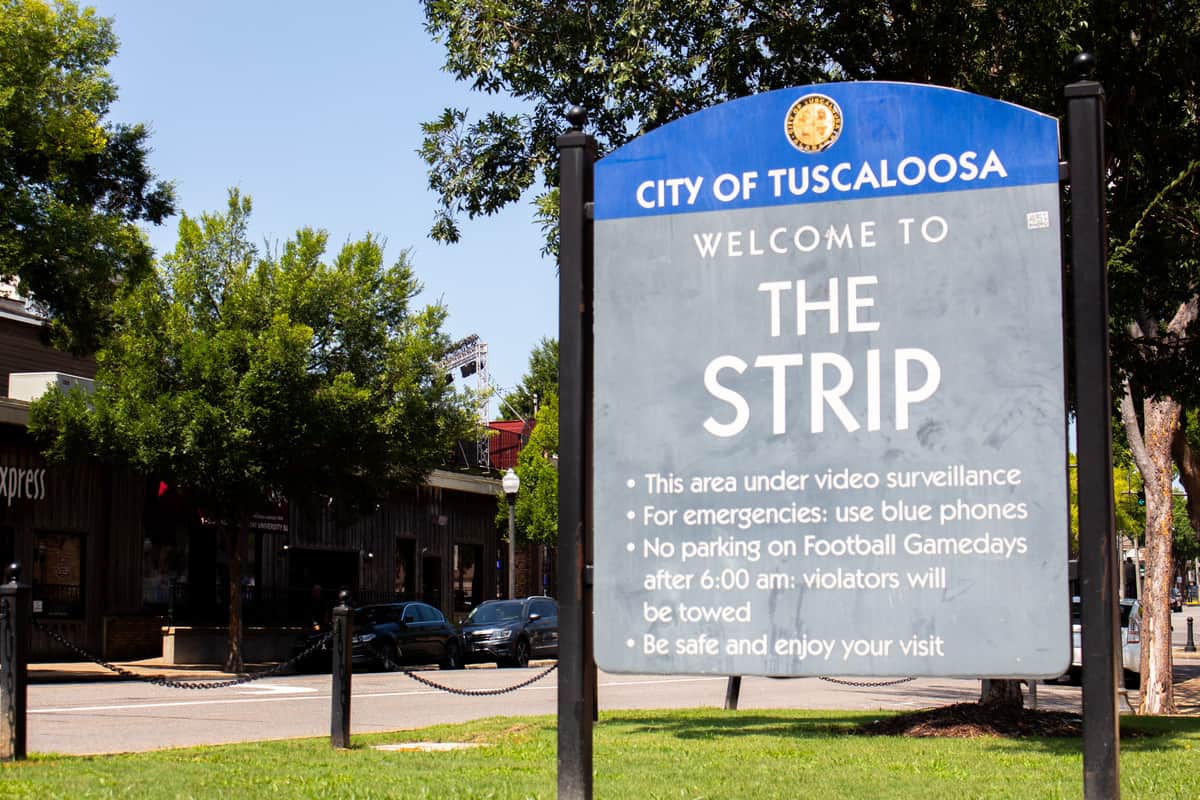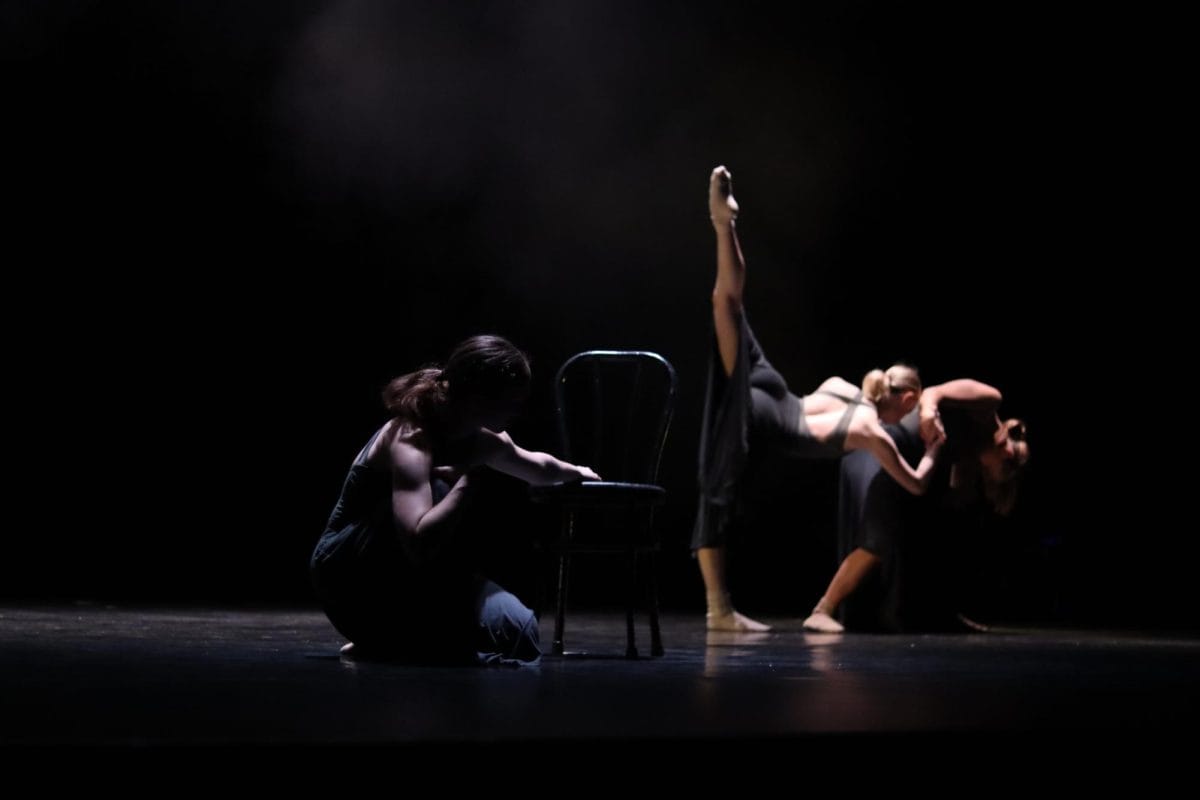Debate continues to flare up concerning sexual assault statistics reported on college campuses.
But data from several recent national surveys agreed on at least one fact regarding universities. Whether by news outlets from media, the police informing communities or by the victims of sexual assault themselves, reporting of the crime remained sparse, including on The University of Alabama’s campus.
In the fall semester of 2015, for example, UA’s Office of Internal Communications sent out only one forwarded University police advisory email about a sexual assault, along with an update. These emails are sent out via the 40,000+ server of The University of Alabama campus community and are able to efficiently communicate issues to students. Based on this students only receiving one email, the threat of sexual assault seems mild.
The White House, on the other hand, has continued to endorse research since 2014 that points to drastically different and disturbing odds.
The Obama administration specially designed Task Force to Protect Students from Sexual Assault was created to tackle “the growing epidemic” occurring at universities all across the nation. Data showed that one in five women and one in 16 men are sexually assaulted while in college, according to the National Sexual Violence Resource Center (NSVRC). This is the data that the White House endorses.
“I would never use the term ‘breeding ground’ for sexual assault, but sometimes college students can fall into several higher risk categories, not just for sexual assault,” said Zoe Winston, The University of Alabama Women and Gender Center peer education programs coordinator. “But those ages, the traditional college ages like 18-24, you’re at higher risk for lots of things.”
Another more recent report released in the spring of 2015 by the Association of American Universities (AAU) covered 27 universities and urged the media to consider the validity college sexual assault statistics, including the “one in five” number of females. Still, the AAU reported “overall rates of reporting to campus officials and law enforcement or others were low, ranging from five to 28 percent.”
Both reports urged students as well as university authorities to consider the number of times someone on campus actually revealed that they’d been sexually assaulted.
Most likely that talk probably hasn’t occurred that often, according to statistics updated by the NSVRC in 2014 that stated approximately 90 percent of sexual assault victims on campus don’t report the crime.
With that in mind, The University of Alabama Police (UAPD) officially reported a total of 17 cases of sexual assault on the University’s campus in 2014, with 14 reports of rape and three reports of fondling.
A discrepancy exists. As said about the sexual violence in the introduction to Not Alone, the White House’s first report of sexual assault, “it tears apart the fabric of our communities,” especially if Universities don’t address the sparsity of reporting.
Victim-blaming
So, how many students didn’t report?
Kathy Echols, a staff therapist for the University’s Women and Gender Resource Center, said the final numbers of students that report sexual assaults each year will never be completely accurate with such a high percent of students too ashamed, anxious, shocked or sometimes unaware of how to report the crime. Echols’ job sometimes includes counseling struggling student victims on whether they should report their sexual assault crime to the University police.
It can be traumatic to recount the crime multiple times, Echols said, especially if they have a deep-rooted fear of blame.
“My job is therapy,” she said. “It’s the police’s job to say that they [victims] need to talk.”
The AAU also cited that most victims of sexual assault on campus that chose not to report did so because they thought it wasn’t serious enough, in addition to a significant percentage of students that specified they were “embarrassed, ashamed or that it would be too emotionally difficult.”
Echols said that a “victim-blaming language” can contribute to stigmas.
“Trying to change the focus, change the language,” Echols said, “it’s important because we’ve normalized it.”
Stereotyping the victim
Victim-blaming is defined by times when the victim of a crime or wrongful act is held either partially or wholly responsible for the harm that befell on them because of the crime. Past examples seen in the media include saying that women who were sexually assaulted shouldn’t be walking alone in the streets at night or that the women were asking for it when they wore certain clothes.
Echols said the perpetrator needs to be held accountable, instead of the victim.
Victim-blaming was perceived last semester in reports involving UA students, as was voiced to Al.com reporter Carol Robinson last fall.
Robinson, a reporter for Al.com for 30 years, has been a lead reporter since 1996 and covered rape and sexual assault accounts various times over the years, including reports on UA students. She said that she learned to report and brief the accounts in the same manner as the rest of the crimes.
A key to reporting, she explained, is to “keep it short because of the sensitivity of crime.”
“If you are a reporter, your job is to report the facts,” Robinson said.
In contrast, 20 years ago, Echols said that talking to the press was a whole different game for her to learn. She said what most reporters took away from her interviews wasn’t her main point, and although she’s now learned how to deal with the media in a more efficient way, she’d still like to see changes, particularly in the language, that don’t include any subtle, unnecessary victim-blaming.
When local broadcasters or newscast come to her now seeking a certain kind of comment, Echols keeps the victim in mind. As a media professional, Robinson expressed the importance in warnings to prevent crimes, regardless of whether it was for sexual assault.
“Police work every day to get rapists off the street, but police can’t always prevent a criminal from a crime,” Robinson said. “They can warn things that don’t make them vulnerable as a victim.”
But with warnings, it places responsibility on the victim.
She said that one particular warning caused “people to bash” her October 12, 2015, article about three UA suspects charged as suspects for gang raping an unconscious 22-year-old woman from Shelton State Community College after she “knowingly,” according to statements from Capt. Gary Hood officer, drank a “combination of fruit punch and Xanax” and then passed out. She was found still unconscious the next morning.
Robinson ended the article with a quote by Hood that read: “If you don’t drink alcohol, you reduce your chances of becoming a (sexual assault) victim by 99.9 percent.”
Elaborations on what Hood said or his source for that statistic doesn’t appear in Robinson’s article, partially, she said, due to the fact that it was brief.
“It’s going to be a two second clip, and I don’t know how people pull out what they pull out,” Echols said. “That’s why I’ve learned how to navigate what I say to the best of my ability.”
More of less, Echols now tries to be “really careful,” so that what she says in the brief interview won’t be misconstrued.
“I’m just quoting the person I interviewed,” Robinson said. “I saw that as excellent teaching opportunity and even shared it with my college daughter because I found it educational.”
Robinson insisted that she was just doing her job.
She also said that a lot people, including some of her readership, “can be really sensitive” about the issue of possible victim-blaming. Heated comments and Facebook shares online for the Al.com article included mostly extreme opinions like “victim-blaming at its finest,” and Hood was “using this crime victim as an example of why ‘she deserved it’ ” to “plenty of women have urged college women to drink responsibly,” and “Hood is suggesting a common sense means of reducing your chances of becoming one.”
Instead of assuming or using language that assumed women played some sort of active role in aggregating the crime, Echols explained that the language in the media needs to push past a stigma and past the blame game so that maybe they can uncover the not-so-pretty reality of why so many students don’t report. Echols said around “60 to 80 percent of victims won’t report,” and some of them then become her clients.
“I think reporters have this burden to talk about this issue but to also make sure that they’re doing services to survivors,” Winston said, “and making sure that survivors don’t have a harder time than they already do.”
Victim-blaming is the frequent term used by media consumers today.
Much to the dismay of Hood, the different posts and comments on Al.com, Facebook and Twitter accused him of igniting a crude blame game against a college student, not a warning. Robinson said the decision was made to purposefully take out the end quote for print version of the article because of the backlash.
She also said that, if offered the chance, “she wouldn’t write it differently.”
She clarified that Hood was the source of the quote.
Normalizing the response
Warning potential victims with the 99.9 percent statistic took precedent in Robinson’s article over warning accountability for the supposed 3 percent of University male students that research said accounts for the repeated offenders of sexual assault on campus, according to reports in 2014 sent by the Rape, Abuse and Incest National Network (RAINN).
“I think people who read it that way are reading way too much into it, plain and simple,” Robinson said. “Why do I have to change the wording on one crime, when I don’t on others?”
But both Robinson and Echols agreed that “sex is still taboo” in our culture, which multiple articles and research theories point to as a contributing struggle in the reporting process of sexual assault.
Beth Howard, the coordinator of UA’s Title IX chapter, said people tend to immediately think, “that didn’t happen.”
But even 17 reports in 2014 proved that it does.
“College campuses tend to have some higher rates [of sexual assault] maybe than the outside community. But also college students are uniquely positioned to not only get educated on this issue, but also to respond,” Winston said.
University-run or affiliated media and UAPD alerts are no exception to that unique response, especially with the ability to instantly contact a database of over 40,000 people.
Based on the archives of UAPD’s website, no alert was sent to the University to forward out to the campus community about the gang rape that Robinson reported, despite the fact that three of the four men charged for rape were UA students.
When normalized sexual violence is rationalized by automatic blame or blatant disbelief of victims, a dangerous mindset creeps into the community—a mindset that many people or students don’t question.
Media ignoring perpetrators
Al.com published a follow-up article to Robinson’s first one, also written by her, on Nov. 10, 2015, titled “Tuscaloosa gang rape illustrates ‘epidemic’ of Xanax use among young people, police say.”
That concludes that the ‘epidemic’ is Xanax, not that four men, three being then-active UA students, felt comfortable enough to make the conscious decision to rape an unconscious girl.
“[Xanax] presents a clear and present danger to the community,” Tuscaloosa police Chief Steve Anderson was quoted as saying in the article.
A comment to the online version was made that “Xanax doesn’t cause gang rapes. And gang rapes don’t illustrate a Xanax problem.” Robinson said that the reporters at Al.com collectively try to “do everything they can to protect them [victims],” including never naming victims, even when they testify in open court, despite the fact that media consumers pointed out the blame.
Echols and other staff member at the WGRC aren’t the only ones to say that the media has become fixated on the victim based on the threads to other articles about sexual assault.
RAINN President Scott Berkowitz wrote in the 2014 letter addressed to the White House Task Force to Protect Students from Sexual Assault: “In the last few years, there has been an unfortunate trend towards blaming “rape culture” for the extensive problem of sexual violence on campuses.”
“Rape culture,” a term coined in the 1970s by gender theorists and feminists, accuses popular culture and the media of excusing and even encouraging the normalized mindset of sexual violence in America, especially against women.
The letter continued: “While it is helpful to point out the systemic barriers to addressing the problem, it is important to not lose sight of a simple fact. Rape is caused not by cultural factors, but by the conscious decisions of a small percentage of the community to commit a violent crime.”
“When I’m asked questions like ‘what can we tell women?’ I always back that one up with women aren’t doing anything wrong,” Echols said. “We need to get perpetrators off the streets.”
With that being said, Echols said that she doesn’t “know of any particular program that’s being directed at perpetrators” and focuses strictly on prevention.
“We have the resources for after it happens,” she said.
Reporting a lack of seriousness
With murders and “so much else happening every day,” Robinson said that most rapes must take the back burner in the professional world of media.
The reporters are required to look at court and police records every day and choose what crimes should be stories to go into the limited space that’s in the paper or as a brief online. There isn’t enough time to cover all rapes, along with other crimes that happen repeatedly every day, unless it’s a particularly newsworthy situation or a “bigger case.”
“But rape is rape no matter how you look at it,” Robinson said. “Certainly no one’s saying it didn’t happen and that it’s not important.”
The CDC’s Rape and Prevention Program concluded that “some significant first steps would be for universities to work to build trust between administrators and the student body” so that students felt like reporting was a serious option.
Another major reason cited in the AAU survey about why student victims chose not to report to the campus police or administration is that they “did not think anything would be done about it.”
Howard works with University Administration, departments, students, faculty, staff and campus police to create a campus environment free of illegal gender discrimination and sexual violence. She also manages sexual assault reports and complaints and is “charged with identifying and addressing any patterns or systemic issues that arise in reviewing such complaints,” according to the Title IX website.
“I mean, we would hope that people leave [UA] with a greater understanding, greater respect, a better person, a better community member than they were when they got here,” Howard said.
No campus-wide survey has been given on whether a large or small percentage of the student body knows about the resources available at the University or whether they take them seriously. Chris Bryant, UA’s interim director of media relations, explained that The University of Alabama decision to notify students of a possible threat on campus or about a sexual assault or other crimes, “is driven, in large part, by UAPD’s recommendation,” along with UA’s executive leadership.
Bryant said “the University has a variety of communication vehicles that it employs when students need to take action.” He said students can be alerted via test, phone, email, outdoor or indoor speaker systems and messaging on Crimson Ride buses, along with the dozens of digital screens inside campus buildings. Currently, the University only updates the students via crimson email when UAPD sends them a safety alert.
In the fall semester of 2015, the UA website only lists that one alert was sent out that involved a possible threat for sexual assault.
The one email that was sent out in the fall semester was sent because of the possibility that more students were unsafe and vulnerable to assault. The email involved “an unknown male, in a white vehicle, who stated he was part of a church organization providing sober rides for people that were in need of one,” and was at large after the victim “was able to exit the vehicle and flee the scene.”
Unlike the majority of sexual assaults, this situation involved a complete stranger, one that acted as an obvious predator. The reality is that people who sexually assault can be friends, roommates, neighbors, classmates, academic club or Greek members, friends of friends or boyfriends or girlfriends, according to Echols.
Howard, who deals with the students that report, acknowledged that she thought general reporting was good, especially on topics like bystander prevention. At very least, she said, it makes students talk about it.
“There’s already this pervasive myth that survivors falsify or exaggerate their claims or make claims of sexual assault or dating violence to get back at someone,” Winston said.
In both major reports listed above, a significant percent of students listed one of their reasons to not report to the campus police or school authorities because others might think they “were partly at fault” or because of “fear they would be blamed.”
The data points to a pattern of blame on college campuses.
Victim-blaming is a tactic that people consider the media to be no stranger to, regardless of intent.
Students are encouraged to call 1-800-656-HOPE for the National Sexual Assault Hotline if that is a reporting method that they are more comfortable with.






